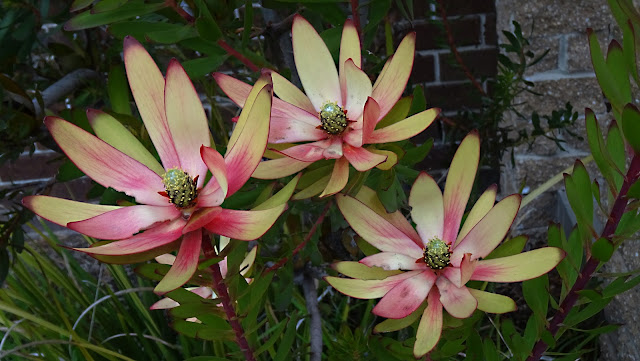Leucadendron is a genus of about 80 species of flowering plants in the family Proteaceae, endemic to South Africa, where they are a prominent part of the fynbos ecoregion and vegetation type.
Species in the genus Leucadendron are small trees or shrubs that are erect or creeping. Most species are shrubs that grow up to 1 m tall, some to 2 or 3 m. A few grow into moderate-sized trees up to 16 m tall. All are evergreen. The leaves are largely elliptical, sometimes needle-like, spirally arranged, simple, entire, and usually green, often covered with a waxy bloom, and in the case of the Silvertree, with a distinct silvery tone produced by dense, straight, silky hairs. This inspired the generic name Leucadendron, which literally means "white tree".
The flowers are produced in dense inflorescences at the branch tips; plants are dioecious, with separate male and female plants. The seed heads, or infructescences, of Leucadendron are woody cone-like structures. This gave rise to their generic common name cone-bush. The cones contain numerous seeds. The seed morphology is varied and reflects subgeneric groupings within the genus.
A few such as the Silvertree, Leucadendron argenteum have a silky-haired parachute, enabling the large round nut to be dispersed by wind. A few are rodent dispersed, cached by rats, and a few have elaiosomes and are dispersed by ants. About half the species store the seeds in fire-proof cones and release them only after a fire has killed the plant or at least the branch bearing the cone. Many such species hardly recruit naturally except after fires.
This post is part of the Floral Friday Fotos meme.







You got my attention. Beautiful!
ReplyDeleteI have never seen flowers are produced in dense inflorescences at the branch tips, but they are sensational.
ReplyDelete